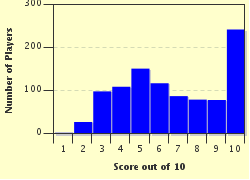Quiz Answer Key and Fun Facts
1. Weevils are beetles and belong to the scientific Superfamily Curculionidae. Which of these is NOT another name for a weevil?
2. There is a species of weevil with the scientific name Anthonomus grandis, that is a pest on cotton crops as they grow in the fields. The mother weevil lays her eggs in the bud of the plant, and when they hatch, the baby weevils eat the buds. Do you know the special name which is used for the bud part of the cotton plant?
3. Some weevils are carnivorous (eat meat).
4. Which of these groups of creatures do woodlice belong to?
5. How do woodlice breathe?
6. How do mother woodlice look after their eggs until they hatch?
7. The word whelk is used for several different species of which creature?
8. One species which is sometimes referred to as a whelk is the giant triton, found in Australia and New Zealand. Giant tritons are one of the only creatures which can kill and eat which dangerous, venomous, predatory, ecologically damaging species?
9. What would a whelk use its radula for?
10. The knobbed whelk, scientific name Busycon carica, is the State shellfish of two of the United States of America.
One of them has a State animal who is an opossum called Pogo Possum, and is sometimes called the Peach State. Which State is this?
Source: Author
Rowena8482
This quiz was reviewed by FunTrivia editor
NatalieW before going online.
Any errors found in FunTrivia content are routinely corrected through our feedback system.


